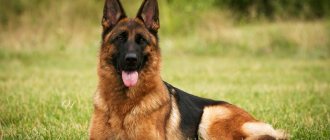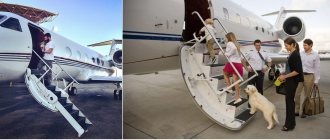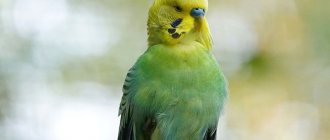March 22, 2019
Adviсe
The law provides penalties for an owner who fails to take care of a pet or deliberately fails to fulfill his or her duties. How to get compensation for damage to health or property caused by a dog, and in what case will the victim receive nothing?
A person must be responsible for his property and maintain it so that no harm is caused to others. Otherwise, he will have to pay damages. The same applies to animals (Article 137 of the Civil Code of the Russian Federation). If a dog causes harm, its owner will be held liable (Articles 15, 137, 209, 210, 393, 1064 of the Civil Code of the Russian Federation).
However, this rule does not always work. Thus, the Arkhangelsk Regional Court indicated in November last year that, even if a dog bites a person, its owner is not obliged to compensate for the damage if the totality of the following facts is established1:
- the plaintiff, i.e. the one who went to court, does not live in the premises where he was bitten by the dog;
- he cannot visit this premises without the permission of the dog owner, since it does not belong to the plaintiff by right of ownership or other legal right (for example, it was not received under a social tenancy agreement);
- the plaintiff knew that there was a dog in the premises, nevertheless he entered there without warning, thereby provoking its attack; however, he did not prove that he was bitten elsewhere;
- The owner of the dog claimed that it was tied, and the plaintiff did not deny this fact or prove that the animal was improperly kept.
It turns out that the issue of the relationship between the rights and responsibilities of dog owners is debatable.
What rules should pet owners follow?
A legal artifact called “Rules for keeping dogs and cats in cities and other populated areas of the RSFSR”2 is still in force. Courts continue to refer to it when recovering damages caused by a dog to human health3. Dog owners in clauses 2 and 6 of these rules are obliged to:
- ensure the safety of others;
- prevent animals from polluting apartments, common areas in residential buildings, as well as courtyards, sidewalks, streets, etc.;
- ensure silence in residential areas;
- do not allow animals into playgrounds, shops, canteens and other similar public places;
- register and re-register dogs in a timely manner;
- do not allow animals to be kept in numbers greater than those established by the district and city executive committees. (This norm is actually “dead”. Where are these district executive committees now? However, it was “reanimated” in the new Law on the Responsible Treatment of Animals, which will be discussed below.);
- treat animals humanely: do not throw them away, do not leave food and water unattended, do not beat them, etc.;
- present animals at the request of veterinary specialists for examination, diagnostic studies, vaccinations and therapeutic and preventive treatments;
- immediately inform the veterinary institution and health authority that a dog or cat has bitten a person or other animal;
- immediately inform the veterinary institution about the sudden death of dogs or cats, about suspected rabies in animals and isolate them until specialists arrive;
- compensate for damage caused by animals.
What responsibilities does the new law impose on dog owners?
Late last year, the Responsible Animal Welfare Act4 was adopted, most of which have already entered into force. Article 9 of this law establishes general requirements for keeping animals that each owner must fulfill:
- proper care;
- timely provision of veterinary care and implementation of mandatory preventive measures;
- preventing the appearance of unwanted offspring;
- provision of an animal at the request of officials of state supervisory authorities in the field of treatment of animals during inspections;
- management of biological waste in accordance with the legislation of the Russian Federation (the owner’s obligation to ensure that his dog does not pollute public places and urban areas was established in Soviet legislation, and responsibility is provided for by modern laws, for example the Code of Administrative Offenses of Moscow);
- If a person can no longer keep an animal, he is obliged to transfer it to a new owner or to a shelter.
For violation of these rules, dog owners are subject to liability, which will be discussed in detail below.
In addition to meeting the general requirements for keeping animals, the dog owner must:
- respect the rights of persons living in the same apartment building as him;
- while walking the dog, ensure the safety of citizens and animals, the safety of other people's property; exclude the possibility of uncontrolled movement of the animal when crossing the roadway, in elevators and common areas of apartment buildings, in courtyards, on children's and sports grounds; ensure the cleaning of animal waste products in public areas; do not walk the animal outside the places where it is permitted by the local government.
Is it legal to enter a store or pharmacy with a dog?
According to the laws of the Russian Federation and requirements for dog walking, entry with animals into grocery stores is prohibited. However, there is no mention of non-grocery retail outlets and pharmacies. Nevertheless, the presence of a sign at the entrance prohibiting passage with dogs, as well as requests from employees and store owners to leave the premises if they have a pet, regardless of its size and breed, are a priority for law enforcement officers.
Important! Unimpeded entry into all establishments of a city or town is allowed only to visually impaired people with a guide dog.
Some retail establishments do not oppose visiting customers with pets. A prominent representative of such places are pet stores. But even in them, pets cannot walk independently.
What prohibitions should a dog owner observe?
The Responsible Animal Welfare Act prohibits a dog owner from:
- use pets in business activities;
- keep a large number of animals, without taking into account their ability to provide them with conditions that comply with veterinary standards and sanitary and epidemiological rules (this norm has not yet been clarified, but it is possible that such clarifications will appear soon. In the Law on the Responsible Treatment of Animals (Article 19, will come into force on January 1, 2022) and the Law on Veterinary Medicine (Articles 8, 9, 19) for the bodies that will monitor the implementation of animal legislation, serious powers are laid down, but they have not yet been fully distributed);
- walking a potentially dangerous dog without a muzzle or leash. The exception is when the dog is in a fenced area belonging to its owner. The presence of a dog must be indicated by a warning sign at the entrance to the territory.
Muzzle requirements
There are no clear requirements for the material or size of the muzzle, as is the case with a leash. In order not to harm the animal and not create situations where the dog can simply chew and remove the muzzle, when choosing a device, it is better to rely on the following tips:
- Buy a muzzle that is safe for your dog - completely breathable and allowing the animal in the muzzle to fully open its mouth.
- Select the product by size. The muzzle should not cut into the animal's nose and not interfere with vision. This condition is a guarantee of the safety of others.
Which dogs can only be walked with a muzzle?
It will be possible to walk potentially dangerous dogs only with a muzzle and a leash.
These include dogs of certain breeds, their hybrids and other dogs that pose a danger to human life and health. They are listed in the List of Potentially Dangerous Dogs approved by the Government of the Russian Federation. Let us note that this list is included in the draft resolution, which was recently published by the Russian Ministry of Internal Affairs. It is likely that the project will be accepted as presented or with minor changes. After this, the final list of dogs that will not be allowed to be walked without a muzzle will be known.
Owners of dangerous dogs, their neighbors, dog breeders, breeders, dog handlers, and owners of catering establishments with “restaurant” dogs and cats should study the draft resolution (there are already precedents with pug cafes and cat cafes). If a resolution is adopted, you must be prepared to comply with its requirements, which duplicate the dog walking rules discussed above, set out in the Responsible Treatment of Animals Act. Additionally, it will include a ban on setting animals on people. An exception will be cases of necessary defense, dog training by dog handlers and the use of service animals in accordance with the legislation of the Russian Federation.
What kind of equipment is there?
A dog walking area, the standards for creating which are given above, must be equipped with special equipment. They are necessary for proper training of the pet.
Developmental complexes are located sequentially one after another. They can be installed at different angles. All equipment is divided into two types:
- contact;
- contactless.
The combination of these two types of exercise equipment allows pets to remain energetic, have flexible muscles and develop mental abilities.
Contact projectiles
The first subgroup of projectiles includes:
- Hills (at least two shields).
- Balance. It looks like a swing for children.
- Boom. This is a slide with two descents.
- Tunnel. A two meter long pipe acts as a simulator.
Slide for training
Non-contact projectiles
The list of the second group of shells includes:
- Barriers. They can be of different heights and configurations, and have their own size.
- Rings. This is also a kind of barrier, but not permanently fixed.
- Slalom. This is the name given to vertical posts standing on the same line, but of different heights.
- Podium. A small area for team consolidation. After jumping on it, the pet must stand without moving for some time.
Attention! If the training takes place at a private site, you will need to pay for each visit at the rate set by the owner.
For what can pet owners be held administratively liable?
Let's consider the situation using Moscow as an example. The most common violations are:
- keeping animals in common areas of communal apartments and apartment buildings;
- pollution by pets of common areas of the home and public places;
- violation of walking rules, for example, showing up with a dog without a leash and muzzle;
- an attack by one domestic animal on another, resulting in the latter being injured or killed;
- setting an animal on people or other animals;
- an animal attack on a person, causing harm to the latter’s health (in the absence of signs of a crime under Article 118 of the Criminal Code of the Russian Federation);
- causing damage to other people's property by animals.
According to Art. 5.1 of the Code of Administrative Offenses of Moscow, the maximum sanction for these violations is no more than 5 thousand rubles.
At the same time, punishing a dog owner for a violation is often a difficult task. For example, difficulties arise with the imposition of a fine for failure to ensure the removal of animal waste products. The ineffectiveness of the mechanism for collecting fines in such cases is explained by the fact that representatives of local government bodies do not have the right to demand documents from the owner of the animal. And this is necessary to bring him to justice. Only a police officer can demand documents. After this, an act is drawn up in his presence, submitted to the authorized local body, and this body issues a decision on a fine. However, more often than not there is no police officer nearby. Therefore, in practice, this whole procedure works with difficulty.
Transportation rules
The movement of dogs in transport is permitted only if there are vaccination documents and a certificate of absence of skin diseases, fleas and rabies. The cost of transportation is set by each region individually.
Basic rules when transporting an animal:
- in public transport, in addition to a certificate and paid fare, a muzzle and a leash are required. Small breeds will require a carrier or container;
- There are a number of restrictions on railway transport. Dogs weighing less than 19-20 kg can travel with their owner in a reserved seat or compartment. The owner pays a separate ticket or the cost of baggage transportation, proportional to the weight of the dog. Animals weighing more than 20 kg are transported in specially designated carriages, equipped for the pet’s comfort. Dog care is provided exclusively by the owner and not by train employees;
- Air transport allows dogs weighing less than 8 kg to be transported in the cabin together with the owner. A pet exceeding this mark is located in an insulated luggage compartment with special containers. The dog requires a leash and collar; a muzzle may not be present.
Transportation of pets
Please note! When transporting an animal in a container, there must be a sign with the dog’s name, the owner’s contact information, copies of transportation permits and veterinarian’s reports on the pet’s health.
Are there also criminal penalties for dog owners?
Such liability is provided for in Part 1 of Art.
118 of the Criminal Code of the Russian Federation (“Causing grievous harm to health through negligence”). The article states that causing grievous bodily harm through negligence is punishable by a fine of up to 80 thousand rubles. or in the amount of wages or other income of the convicted person for a period of up to six months, or compulsory work for a period of up to 480 hours, or correctional labor for a period of up to two years, or restriction of freedom for a period of up to three years, or arrest for a period of up to six months. It is significant that according to the materials of the Consultant Plus service, as of March 17 of this year, one could find only 8 appeal decisions of courts of general jurisdiction at the level of a constituent entity of the Russian Federation (at the same time, decisions and sentences passed by magistrates and district courts were not examined), referring to Part 1 Art. 118 of the Criminal Code of the Russian Federation.
However, if serious harm to health is caused, large sums may be recovered. This is due to the need for rehabilitation of the victim. As an example, we can cite the circumstances of the tragic story, which was reflected in the cassation ruling of the Samara Regional Court5. In 2011, the court recovered half a million rubles from the owner of a dog that bit the face of a two-year-old girl. The owner of the pit bull was found guilty of committing a crime under Part 1 of Art. 118 of the Criminal Code of the Russian Federation. He was sentenced to 180 hours of compulsory labor.
However, more often a dog bite results in mild or moderate harm to health. At the same time, the courts often support the victims in such cases. Thus, in 2022, the Moscow Regional Court awarded damages in the amount of 30 thousand rubles. against the owner of a Spitz because the dog bit the boy on the shin6.
Teach commands
The pet must clearly understand basic commands. So that if necessary, your prohibition would be enough to calm the dog. Among the main required commands:
- "near";
- "to me";
- "ugh";
- "sit".
The animal must understand and follow commands the first time.
A dog's behavior is the result of human upbringing. Therefore, the owner bears full responsibility for the actions of his four-legged friend. If you start instilling certain norms in your puppy from an early age, it will not be difficult for him to strictly follow them in the future.
What to do if you are bitten by someone else's dog?
- Contact a medical facility to prevent the risk of rabies and record damage.
- Then contact the police - submit a statement, register it using a KUSP coupon with the number and date of application, tell about the circumstances of the bite and provide copies of medical documents.
- Pass a medical examination as part of a medical examination appointed by the detective, district police officer or investigator as part of the pre-investigation check.
- Find and provide the authorized police officer with information about witnesses who can confirm what happened.
- Apply to an authorized police officer to seize video recordings if there are video cameras near the scene of the incident.
If serious harm is caused, a criminal case will be initiated.
In this case, the victim must follow all the doctor’s recommendations and the investigator’s instructions regarding the documentation of treatment measures, medications, vaccinations, etc., in order to avoid disputes about the severity of the harm. Remember: if the harm turns out to be mild or moderate, the criminal case will be dismissed. After the case is transferred from the preliminary investigation authorities to the court, a criminal trial will be held and a verdict will be rendered.
A claim for compensation for damage due to a bite can be brought after the initiation of a criminal case and before the end of the judicial investigation when considering the case in the court of first instance. When filing a claim, the civil plaintiff is exempt from paying state duty (Part 2 of Article 44 of the Code of Criminal Procedure of the Russian Federation).
If minor harm is caused, then you should apply to the district court at the place of residence of the dog owner with a claim for compensation for damage. It will be necessary to provide evidence that the victim incurred expenses for medicines, doctors’ services and experienced moral suffering in order to recover compensation for moral damage. In addition, a resolution should be attached to refuse to initiate a criminal case, where the fact of the bite and the dog’s belonging to a specific owner are established, or a resolution to bring the owner to administrative liability.
How to organize a dog walking area
If there is no specially equipped walking area near the house, then you need to contact the authorities or make a site yourself, observing all the rules of this process.
Create a plan
First of all, when creating a site plan, you should comply with the approved standards for the distance of this object from housing and public institutions. Of course, if it is too far away, there will be few visitors.
When developing a project, the following aspects must be taken into account:
- the presence of a high metal fence that will protect passers-by if the animal shows aggression;
- protection of the entire perimeter of the fence from undermining. To do this, you can put logs;
- durable and well-closing door;
- the presence of a coating that allows moisture to pass through well and prevents paws from slipping. It can be a grass lawn or sand;
- trash cans.
In addition, the site must have:
- all kinds of exercise equipment;
- closed canopies where you can hide from the sun and rain;
- benches for the convenience of the owners;
- A prerequisite is the placement of containers with fresh water for dogs.
Important! The best place to create such objects is the nearest park, where there is a lot of greenery and a pleasant atmosphere.
Walking area
Organization of the construction process
Having created a project, you need to enlist the support of neighbors and other animal lovers. This is important, especially if the dog training area will be located near your home. Then you need to draw up an appeal to the administrative body and collect signatures from neighbors.
Most likely, the construction will be supported by many categories of residents:
- Other dog owners. They will be glad to get rid of conflicts with neighbors and finally find a convenient place to walk with their animal.
- Mothers of small children. Parents are more interested in the safety of their children than anyone else. A special platform, as this zone will be called, will make this a reality.
- Pensioners. They are always happy to help in a good cause.
Important! You should not be afraid and give up at the first refusal. Perhaps, after analyzing everything more carefully, people will understand the advantages of what is proposed and decide that it is necessary to build a site.
Official bodies
Most likely, the most difficult part will be the approval of documents and obtaining a building permit from the city administration. Municipal authorities do not seek to create new areas for animals, although this is their direct responsibility. Having found out who is engaged in landscaping in the area, you should go straight there. You need to have documents with signatures and a project with you. Even if the cost of the object is not high, you should not expect that it will be accepted immediately.
Most likely, it will be said that it will be included in next year's estimates. You will have to convince of the need for speedy construction or simply look for an investor on your own. It is best to post on the Internet or advertise on television.
GOST
According to the current law, there are the following rules for construction:
- The voltage in power lines in this area should not exceed 110 kV.
- The possibility of allocating a site is decided by the administration.
- The size of the site in a residential area is allowed within 400-600 square meters. m. In some cases it may be less if there is not enough free space.
- The area should have as smooth a surface as possible and be easy to clean. In addition, this will avoid injury to animals.
- The coating can be hard or combined.
- The height of the fence is calculated based on the dog’s capabilities. She shouldn't jump over it. In any case, the fence is placed at least 1.5 m in height;
- A stand will be set up on the premises to inform about the rules of conduct.
Walking with your pet
Important! The play area is a public area for all dogs.
Benefit
Having an area for walking four-legged pets is important for both their owners and the animals. After all, only daily exercise and communication with the dog allows you to raise it to be obedient and not aggressive. During walks, dog lovers themselves will be able to communicate, share experiences and help each other with training their pets. This is why you need equipment on which you can practice.
In addition, active owners will be able to organize competitions that will attract the attention of the entire yard and will help establish relationships between all residents.
Despite the fact that the law is new and in many cities there are not enough platforms, we must try to change the situation for the better. Then not only citizens who do not have animals at home will be happy, but also those who cannot live without their pets. In reality, creating special areas does not require a lot of time and money, but their presence will help make the yard not a place of discord, but a comfortable area that delights all residents.











